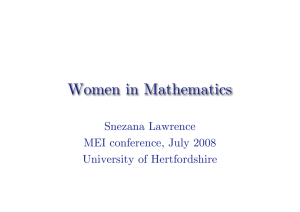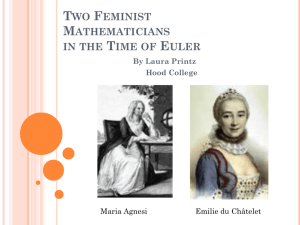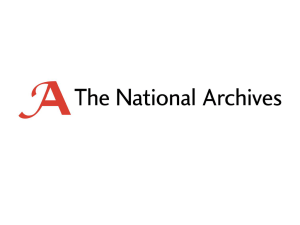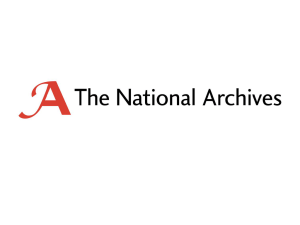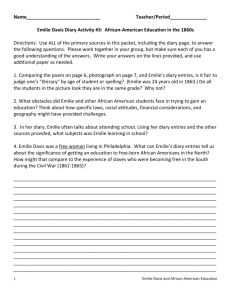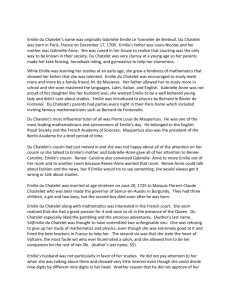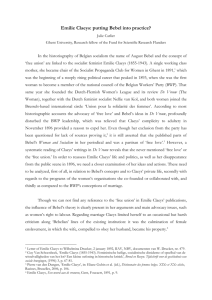Word 07
advertisement
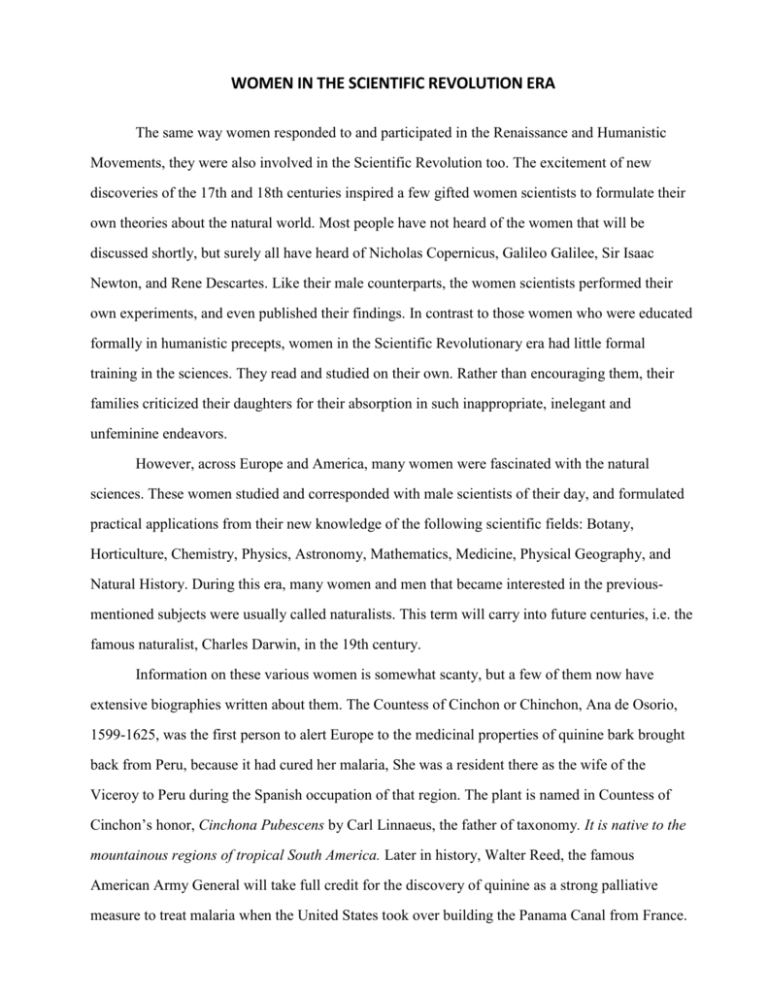
WOMEN IN THE SCIENTIFIC REVOLUTION ERA The same way women responded to and participated in the Renaissance and Humanistic Movements, they were also involved in the Scientific Revolution too. The excitement of new discoveries of the 17th and 18th centuries inspired a few gifted women scientists to formulate their own theories about the natural world. Most people have not heard of the women that will be discussed shortly, but surely all have heard of Nicholas Copernicus, Galileo Galilee, Sir Isaac Newton, and Rene Descartes. Like their male counterparts, the women scientists performed their own experiments, and even published their findings. In contrast to those women who were educated formally in humanistic precepts, women in the Scientific Revolutionary era had little formal training in the sciences. They read and studied on their own. Rather than encouraging them, their families criticized their daughters for their absorption in such inappropriate, inelegant and unfeminine endeavors. However, across Europe and America, many women were fascinated with the natural sciences. These women studied and corresponded with male scientists of their day, and formulated practical applications from their new knowledge of the following scientific fields: Botany, Horticulture, Chemistry, Physics, Astronomy, Mathematics, Medicine, Physical Geography, and Natural History. During this era, many women and men that became interested in the previousmentioned subjects were usually called naturalists. This term will carry into future centuries, i.e. the famous naturalist, Charles Darwin, in the 19th century. Information on these various women is somewhat scanty, but a few of them now have extensive biographies written about them. The Countess of Cinchon or Chinchon, Ana de Osorio, 1599-1625, was the first person to alert Europe to the medicinal properties of quinine bark brought back from Peru, because it had cured her malaria, She was a resident there as the wife of the Viceroy to Peru during the Spanish occupation of that region. The plant is named in Countess of Cinchon’s honor, Cinchona Pubescens by Carl Linnaeus, the father of taxonomy. It is native to the mountainous regions of tropical South America. Later in history, Walter Reed, the famous American Army General will take full credit for the discovery of quinine as a strong palliative measure to treat malaria when the United States took over building the Panama Canal from France. 2 Maria Sibylla Merian, 1647-1717, was the most gifted of all the naturalists during the 17th and 18th centuries, but she was remembered not as a scientist but as an artist. As a little girl she went with her stepfather into fields to collect specimens. She completed and published six collections of engravings of European flowers and insects. These were more than just artistic renderings, for example, she painted caterpillars at every stage of development as she observed them. Her works drew the attention of the Director of the Amsterdam Botanical Gardens and other male collectors of insects. When she was fifty-two, she set off for a two-year expedition into the interior of South America. Only the contacting of yellow fever forced her to return, but her book of sixty engravings establishing her as a naturalist, nearly two hundred years before Charles Darwin. Margaret Cavendish (1617-1673), an English aristocratic woman, taught herself mathematics, astronomy, and studies of the universe. She produced fourteen books on everything from natural history to atomic physics. Learning and writing were definitely her forte. Emilie Du Chatelet, 1706-1749, a French noble woman, was the most erudite of the women scientists. She knew seven languages by the age of twelve. Not only was she a polyglot, but she read extremely fast, and seemed to need little sleep. She was accepted into the foremost mathematical and scientific circles of Paris. Emilie earned a solid reputation as a physicist, when she interpreted and translated the theories of the famous scientist Sir Isaac Newton, even going as far as replicating Newton's experiments. When she took up the study of the French mathematician, Rene Descartes, her father complained: "I argued with her in vain; she would not understand that no great lord will marry a woman who is seen reading every day." However, it was her lover and lifelong friend, the Duke de Richelieu, who encouraged her to formalize her studies by hiring professors in mathematics and physics from the Sorbonne (the University of Paris) to tutor her. When she was barred from Parisian coffeehouses where scientists, mathematicians, and philosophers regularly met, Emilie had a suit of men's clothing made, so that she could enter the premises. A ten-year love affair with the famous philosopher, Voltaire, added to her learning and writing. She was even married by now and had children, but her husband was not usually present, and he allowed Voltaire to have a library of his own at their chateau. Emilie, naturally, had her own library as well. Unfortunately, at times Voltaire himself resorted to wishing for a “normal” woman: 3 “I frequently wish she [Emilie] was less learned and her mind less sharp.” Her reputation as a scientist was sealed with her celebrated work on the German Mathematician and Philosopher, Gottfried Leibnitz, The Institutions of Physics, published in 1740. The University of Bologna is the oldest university in Europe, and in 1732, it took the radical step of inviting the very young Laura Bassi, aged twenty-one to join its faculty. Dame Trotula back in the Middle Ages supposedly taught midwifery there, but scholars give Laura the credit for becoming the first woman to teach at a European University. Laura had her own electrical laboratory, and worked in tandem with her husband on the medical uses of electricity. Bassi published many scientific papers on a variety of subjects including physics, hydraulics and mathematics. Contemporary pictures show her with the Doctor’s Ring, the Teacher’s Ermine cape, and the Poet’s Laurel Crown in 1678, indicating she had earned a Ph.D. The first woman with this degree was Elena Piscopia (1646-1684), but she retired to private life after earning it, and did not go on to teach. One biographer writes this about Laura Bassi: “No scholar would pass through Bologna without being eager for her learned conversation.” Maria Agnesi, 1718-1799, was a child prodigy, who by the age of nine wrote, read and spoke seven languages: Italian (her native language), French, Latin, Greek, German, Spanish, and Hebrew. As teacher to her brothers by the age of twenty, she then started work on a calculus textbook, which was published in 1748. It was one of the first and most complete works covering calculus, and was widely used and translated into other languages as a textbook. She was the second woman to gain a Ph.D. By this time she held a chair in Mathematics and Natural Philosophy at the University of Bologna, an appointment made by Pope Benedict XIV, who it is thought wanted to publicize the University of Bologna’s premier place again. This was the oldest university in Europe. Her name has also been immortalized for the "Witch of Agnesi." One of her solutions for an algebraic equation is still found in today's textbooks. Her solution followed a curve now called the "Witch of Agnesi." This name was not because people thought she was a witch, but because the shape of the curve was called aversiera, which in Italian is slang or the short form for avversiere, which means wife of the devil. Through a series of mistranslations over time, the name of the curve became "Witch of Agnesi." 4 Eliza Lucas Pinckney, 1722-1793, was born in the West Indies, but became an American citizen. She attended finishing school in England, enjoying her favorite subject there, Botany. By the age of sixteen, Eliza was taking care of her siblings, when the family moved to South Carolina. By this time, her mother had died, and her father had returned to the Caribbean. Eliza also ran three plantations while caring for her sisters and brothers. She was responsible for cultivating and creating an improved strain of the indigo plant, source for the blue dye. It eventually became the main export from South Carolina. She married Charles Pinckney, and had four children. Some of her sons became U.S. Senators and signers of the Declaration of Independence. At her funeral, one of her pallbearers was President George Washington. Caroline Herschel reinvented women’s roles in astronomy. Paired up with her better known brother William, Caroline wasn’t just an assistant, but over time she became a vital member of a partnership. Born in Hanover, Germany, Caroline Herschel, 1750-1848, was uneducated when she went at the age of twenty-two to England to live with her brother, William. He had accepted the office of court astronomer to George III in 1782. Caroline’s brother taught her mathematics to be able to execute the laboratory's calculations of William's observations. During her leisure hours she studied the heavens with a small Newtonian reflector, which led to her making her own observations and astronomical discoveries. When the Herschels first started observing the sky for clusters of stars known as nebulae, only about one hundred were known. In the twenty years of their joint efforts, this number increased to over 2500. Perhaps Caroline’s greatest accomplishment was discovering eight or nine comets. In fact, she was the first woman to discover a comet. King George III was so impressed by this that he gave her a royal stipend. In 1798 she presented to the Royal Astronomical Society in London an index to Flamsteed's Observations, including a catalog of 560 stars omitted from the British Catalogue, plus a list of errata in that publication. Some thirty years later, the Royal Astronomical Society presented her with a gold medal for the catalog she had prepared. When they bestowed their honorary membership on her, the French Astronomer, Alexandre Aubert, wrote to Caroline as soon as he had seen the first comet she had discovered: "You have immortalized your name, and you deserve such a reward from the being who has ordered all these things to move as we find them, for your assiduity in the business of astronomy." After 5 Caroline's death in 1848, it would be nearly seventy years before the society opened its doors to women on the same terms as men. In tandem with the Scientific Revolutionary era, renewed arguments about women became an important subject of public debate in the seventeen century. Embryologists debated about women's formative role in conception. Accurate understanding of female anatomy was a long time in coming as it was delayed by the tenacity of ideas inherited from the ancient Greeks. As the microscope was developed during the Scientific Revolutionary Era, studies began to reveal women's equally active contribution to the embryological process. Hitherto, Aristotle was considered the authority on anatomy, with his ill-conceived ideas that a woman was just a vessel for the fetus. Everything came from the father, including the soul. The discussion on the decline of midwives was covered in earlier lectures. During the Scientific Revolutionary Era aristocratic women were able to study and write while marrying and having children and lovers. The intelligent women in these times usually had to choose marriage or gaining knowledge leading to a career. The life of a scholar did not combine easily with the needs of a family. Even the most brilliant and those supported by their families rarely escaped the traditional expectations about the role of women: marriage and children.
